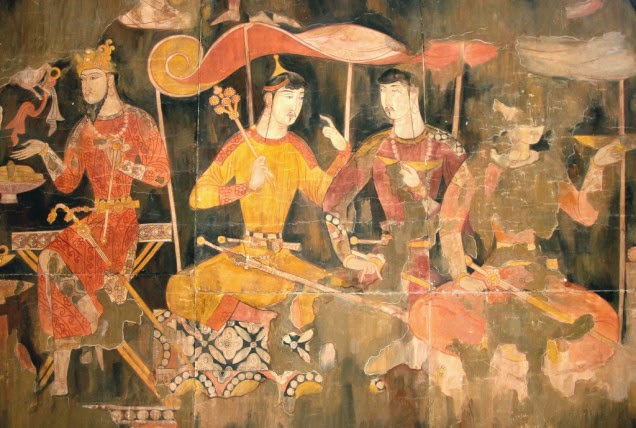World History
 Here's a great essay about the Silk Road city of Samarkand in Uzbekistan. The author, Annalee Newitz, notes that "its culture was a hybrid of Iranian and Chinese influences, its religion a mix of Zoroastrianism and other traditions, and it belonged to a now-vanished ethnic group called the Sogdians."
Here's a great essay about the Silk Road city of Samarkand in Uzbekistan. The author, Annalee Newitz, notes that "its culture was a hybrid of Iranian and Chinese influences, its religion a mix of Zoroastrianism and other traditions, and it belonged to a now-vanished ethnic group called the Sogdians."
Newitz explains how the city became so multicultural and why the Silk Road was so vital to trade. For example, she notes that slaves and horses were some of the most valuable items that were traded.
The Silk Road is important not because it brought silk to the west but, according to Newtiz, because "it brought immigrants to and from all parts of the world. And with them came new ideas, new scientific discoveries, and new political alliances between far-flung groups."
This is a great story to assign students when covering the Silk Road's development.
- Samarkand
Samarkand Samarkand and the neighboring city Bukhara were oases along the valley of the Zeravshan River. Agriculture thrived in the region from the eighth century b.c.e. Formerly known as ancient Afrasiab, the city was founded during the seventh century...
- Silk Road Virtual Tour
Here's a great virtual tour of the Silk Road created by Professor Clayton Brown. My thanks to Angela Lee for tweeting the link....
- Resources At California History Project
The History Project, developed by the University California, has some terrific resources on world history, many of which are engaging classroom lessons.For example, here is a interesting lesson on genocide. It includes a graphic organizer and...
- Silk Road Flipped Lesson
Here's a great TedEd lesson about the Silk Road. You can use it as a flipped lesson with the multiple choice questions provided.. Thanks to the Virginia Geographic Alliance for tweeting the link....
- John Green's Silk Road
John Green is putting these out a very quick clip. Above is his overview of the Silk Road. ...
World History
The Lost Empire that Ruled the Silk Road

Newitz explains how the city became so multicultural and why the Silk Road was so vital to trade. For example, she notes that slaves and horses were some of the most valuable items that were traded.
The Silk Road is important not because it brought silk to the west but, according to Newtiz, because "it brought immigrants to and from all parts of the world. And with them came new ideas, new scientific discoveries, and new political alliances between far-flung groups."
This is a great story to assign students when covering the Silk Road's development.
- Samarkand
Samarkand Samarkand and the neighboring city Bukhara were oases along the valley of the Zeravshan River. Agriculture thrived in the region from the eighth century b.c.e. Formerly known as ancient Afrasiab, the city was founded during the seventh century...
- Silk Road Virtual Tour
Here's a great virtual tour of the Silk Road created by Professor Clayton Brown. My thanks to Angela Lee for tweeting the link....
- Resources At California History Project
The History Project, developed by the University California, has some terrific resources on world history, many of which are engaging classroom lessons.For example, here is a interesting lesson on genocide. It includes a graphic organizer and...
- Silk Road Flipped Lesson
Here's a great TedEd lesson about the Silk Road. You can use it as a flipped lesson with the multiple choice questions provided.. Thanks to the Virginia Geographic Alliance for tweeting the link....
- John Green's Silk Road
John Green is putting these out a very quick clip. Above is his overview of the Silk Road. ...
